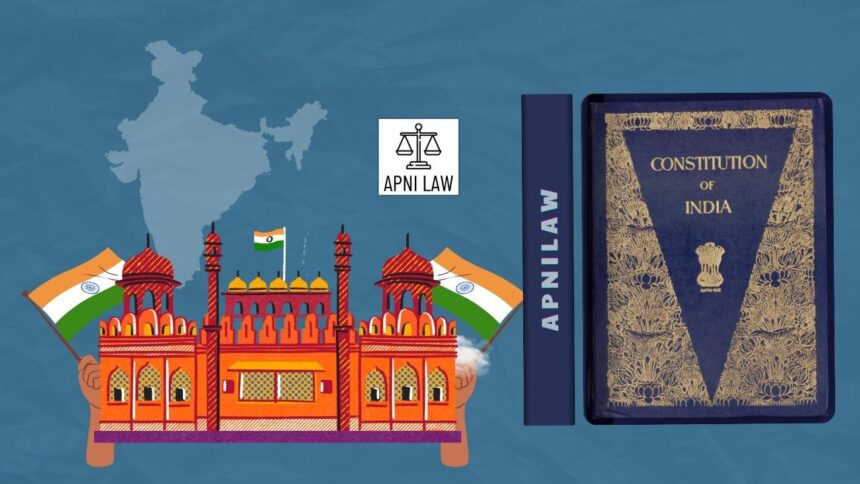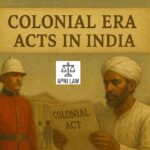Introduction
The Constitution of India is one of the most remarkable documents in the world because of its ability to adapt to change. It was written with a vision that India’s social, cultural, and political landscape would not remain the same forever. One of the clearest examples of this adaptability lies in Article 2 and Article 3, which give Parliament the power to admit, establish, and reorganize states. These provisions are not simply legal clauses. They are living instruments that have redrawn India’s map many times since independence. They also reveal the balance between India’s federal spirit and the central authority of the Union.
Article 2: Admission and Establishment of New States
Article 2 allows Parliament to admit new states into the Union or establish new ones on conditions it deems appropriate. The framers of the Constitution included this Article to make room for territories that were not part of India in 1950 but could join later. The most prominent example of this is Sikkim, which was integrated into India in 1975 through a constitutional amendment. Originally a protectorate with a special status, Sikkim became the twenty-second state of India after a referendum favored integration. Article 2 gave Parliament the flexibility to manage this process legally and peacefully.
The language of Article 2 is deliberately broad. It does not specify how or when such states can be admitted. Instead, it grants Parliament wide discretion, ensuring that India could adapt to international agreements, political realities, or even the will of people in a territory seeking to join the Union. This openness has been vital in maintaining both unity and flexibility in India’s growth as a nation.
Article 3: Creation and Reorganization of States
While Article 2 deals with admission, Article 3 is far more central to India’s political history. It gives Parliament the authority to create new states or change the boundaries and names of existing states. Using this Article, Parliament can separate territory from a state, merge two or more states, divide a state, or even rename it.
The States Reorganisation Act of 1956 remains the most significant event under Article 3. Based on the recommendations of the States Reorganisation Commission, India was reorganized largely on linguistic lines. This decision followed years of demands from different linguistic groups who wanted states that reflected their cultural and linguistic identities. Andhra Pradesh became the first linguistic state, followed by Karnataka, Kerala, and others.
Since then, Article 3 has been used repeatedly. Haryana was created in 1966 from Punjab. Chhattisgarh, Jharkhand, and Uttarakhand were created in 2000 to address cultural and economic needs of distinct regions. In 2014, Telangana was carved out of Andhra Pradesh, proving that even in modern times, Article 3 remains an essential tool to manage political aspirations.
The Procedure Under Article 3
The procedure of creating or reorganizing states reflects India’s federal yet unitary design. A bill to reorganize states can only be introduced in Parliament on the recommendation of the President. Before this happens, the President must refer the proposal to the legislature of the state concerned, giving it an opportunity to express its opinion. However, the opinion of the state legislature is not binding. Parliament can proceed with the reorganization regardless of whether the state agrees or not.
This framework has been the subject of debate. Critics argue that it undermines the principle of federalism since states have no decisive role in altering their boundaries. They point to the creation of Telangana as an example, where the Andhra Pradesh Assembly opposed the move but Parliament still passed the reorganization act. On the other hand, supporters maintain that giving states a veto would have made reorganization impossible in a diverse country like India. The framers believed that in matters of territory, national unity should prevail over regional consent.
Historical Use of Articles 2 and 3
The use of Articles 2 and 3 has shaped India’s identity. After independence, India inherited a complex mix of princely states, provinces, and regions with different languages and cultures. Demands for linguistic states grew stronger after Potti Sriramulu’s hunger strike in 1952, which eventually led to the creation of Andhra Pradesh. The States Reorganisation Act of 1956 then set the stage for linguistic states across India, strengthening rather than weakening the Union.
In later decades, Articles 2 and 3 helped address demands for autonomy and recognition. The creation of Jharkhand responded to the aspirations of tribal communities. Uttarakhand was formed to meet the unique cultural identity and geographic needs of the hill regions of Uttar Pradesh. Chhattisgarh was created to give tribal regions of Madhya Pradesh more focused governance. The creation of Telangana was the result of a long-standing movement demanding separate statehood for cultural and economic reasons. Each of these cases demonstrates how Articles 2 and 3 provided a constitutional path for resolving disputes and avoiding violent conflict.
Sikkim and Article 2 in Action
The case of Sikkim highlights the significance of Article 2. Unlike Article 3, which applies to states already within India, Article 2 was used to admit a territory that was not part of the Union. After political developments in the 1970s and a referendum where the majority supported joining India, Parliament passed the 36th Amendment Act, 1975, making Sikkim a full-fledged state. This move showed that the Constitution had left space for India to grow in a way that reflected democratic will and international realities.
Criticism of Articles 2 and 3
While these Articles have served India well, they are not free from criticism. Many scholars argue that giving Parliament unilateral power over state boundaries weakens the federal nature of the Constitution. States may feel powerless if their consent does not matter in reorganization. The controversy over Telangana exposed this tension, as leaders in Andhra Pradesh felt ignored in the process.
However, defenders of the system argue that the framers deliberately designed it this way. At the time of independence, India was fragile, with partition fresh in memory and multiple secessionist movements brewing. Allowing states to veto territorial changes could have destabilized the Union. Central authority in this matter was seen as essential to protect unity.
Federalism and the Balance of Power
Articles 2 and 3 highlight the balance between central authority and regional diversity. Although the Union has the final say, the requirement of consultation with state legislatures reflects a recognition of federal principles. The process demonstrates India’s unique model of cooperative federalism, where states are consulted but cannot obstruct national interests.
This balance has helped India remain united while respecting diversity. Demands for statehood have been addressed constitutionally, unlike in many countries where similar disputes have led to violence. The peaceful creation of Telangana is a reminder that even contentious demands can be resolved through parliamentary action rather than force.
Impact on Indian Democracy
The ability to reorganize states has been crucial to India’s democratic success. It has allowed regional identities to find expression without challenging national unity. It has also strengthened governance by creating states that are more responsive to local needs. By contrast, a rigid territorial system could have fueled separatism. Articles 2 and 3 ensured that India could adapt to its people’s aspirations and remain stable.
Conclusion
Articles 2 and 3 of the Constitution of India stand as proof of the framers’ foresight. Article 2 empowers Parliament to admit or establish new states, while Article 3 allows the creation and reorganization of existing states. Together, they have been used to reshape India’s map, address demands for recognition, and preserve national integrity. Critics point to the centralization of power, but the historical record shows that these provisions have enabled India to adapt to change peacefully. By striking a balance between unity and diversity, Articles 2 and 3 continue to be vital tools in sustaining India’s democracy and federal spirit.
For any specific query call at +91 – 8569843472








